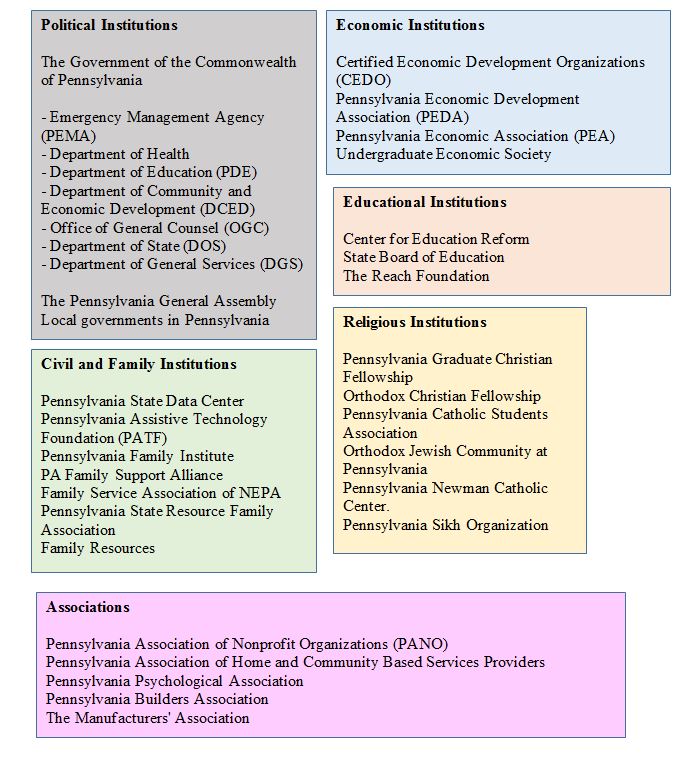In order to manage the crisis in the most efficient way, it is necessary to develop a plan for its prevention. In turn, crisis planning relates to the management process as it requires structural approach and strategic perspective (Crandall et al., 2010). In particular, effective crisis prevention presupposes the understanding of several distinctions, including the analysis of external factors and internal attributes for the development of long-term and distinctly opportunistic strategies.
In the case of a disaster, internal attributes are the community’s assets that play a crucial role in its prevention and response. According to Beaulieu (2002), “the long-term development of a community rests on its ability to uncover and build on the strengths and assets of its people, institutions, and informal organizations” (p. 1). As resources and talents exist in any community regardless of its social, economic, and political peculiarities, asset mapping may be regarded as an efficient tool for their assessment. The evaluation of available assets is essential for communication between them for the provision of efficient response. For instance, the development of relationships between service agencies, national and local crisis responding organizations, state and local affiliates, and even governments is required for efficient planning that allows to minimize the consequences of a disaster in the case of its occurrence. The following map represents the assets of Pennsylvania that may contribute to crisis prevention and management.

The map demonstrates the availability of a well-developed institutional system in Pennsylvania that may be highly efficient in the case of crisis response within the framework of collaboration between people, organizations, and authorities. Its assets may provide a multifaceted approach to the solution of any crisis-related issue. For example, in the case of an emergency, political institutions will develop responsive and preventative measures and exercise control over their implementation, educational institutions will spread awareness, economic institutions will contribute to solutions financially, and family, civil, and religious institutions along with international, state, and local non-profit organizations will support the population.
First of all, political institutions elaborate on policies and regulations for preparedness for various disasters. For instance, in collaboration with the departments of health and education, the Pennsylvania Emergency Management Agency (PEMA) (n.d.) is responsible for guidance to help “communities and citizens mitigate against, prepare for, respond to, and recover from emergencies including natural disasters, acts of terrorism, or other human-made disasters” (para. 2). If an emergency occurs, state and local authorities create a recovery plan, while numerous non-profit organizations and volunteers work in collaboration with each other and help citizens with food, water, clothing, medications, and accommodation.
It goes without saying that efficient crisis management frequently requires partnership with national organizations, such as Voluntary Organizations Active in Disaster (VOAD). First of all, National VOAD has affiliates across the country in multiple states, including Pennsylvania. In the case of a disaster, Pennsylvania VOAD acts according to the standards developed by National VOAD – in particular, it collaborates with other associations and non-profit organizations “that mitigate and alleviate the impact of disasters” (Pennsylvania Voluntary Organizations Active in Disaster, n.d., para. 1). Moreover, it promotes collaboration and communication, fostering the delivery of essential services to people affected by the crisis.
There are multiple ways in which Pennsylvania VOAD may collaborate with the state’s institutions for efficient response. For instance, National VOAD creates materials related to Disaster Case Management (DCM) that provide essential information for its affiliates about emergency preparedness and response. While VOAD’s programs cannot be regarded as guidance for state and local governments, they have an opportunity to implement the organization’s practices in their official recovery plans. In addition, in collaboration with educational institutions, VOAD may educate the population regarding appropriate activities in the case of an emergency to avoid human losses. Moreover, VOAD may partner with non-profit associations and foundations, for instance, with Pennsylvania Assistive Technology Foundation (PATF), to elaborate on efficient measures in order to support disabled people in the case of an emergency. Finally, VOAD may collaborate with civil, religious, and family institutions to provide support for citizens, attract volunteers, or initiate donations.
References
Beaulieu, L. J. (2002). Mapping the assets of your community: A key component for building local capacity. Southern Rural Development Center, Mississippi State, MS, 1-14.
Crandall, W. R., Parnell, J. A., & Spillan, J. E. (2010). Crisis management in the new strategy landscape. SAGE Publications.
Pennsylvania Emergency Management Agency (PEMA). (n.d.). About PEMA. Web.
Pennsylvania Voluntary Organizations Active in Disaster. (n.d.). About us. Web.